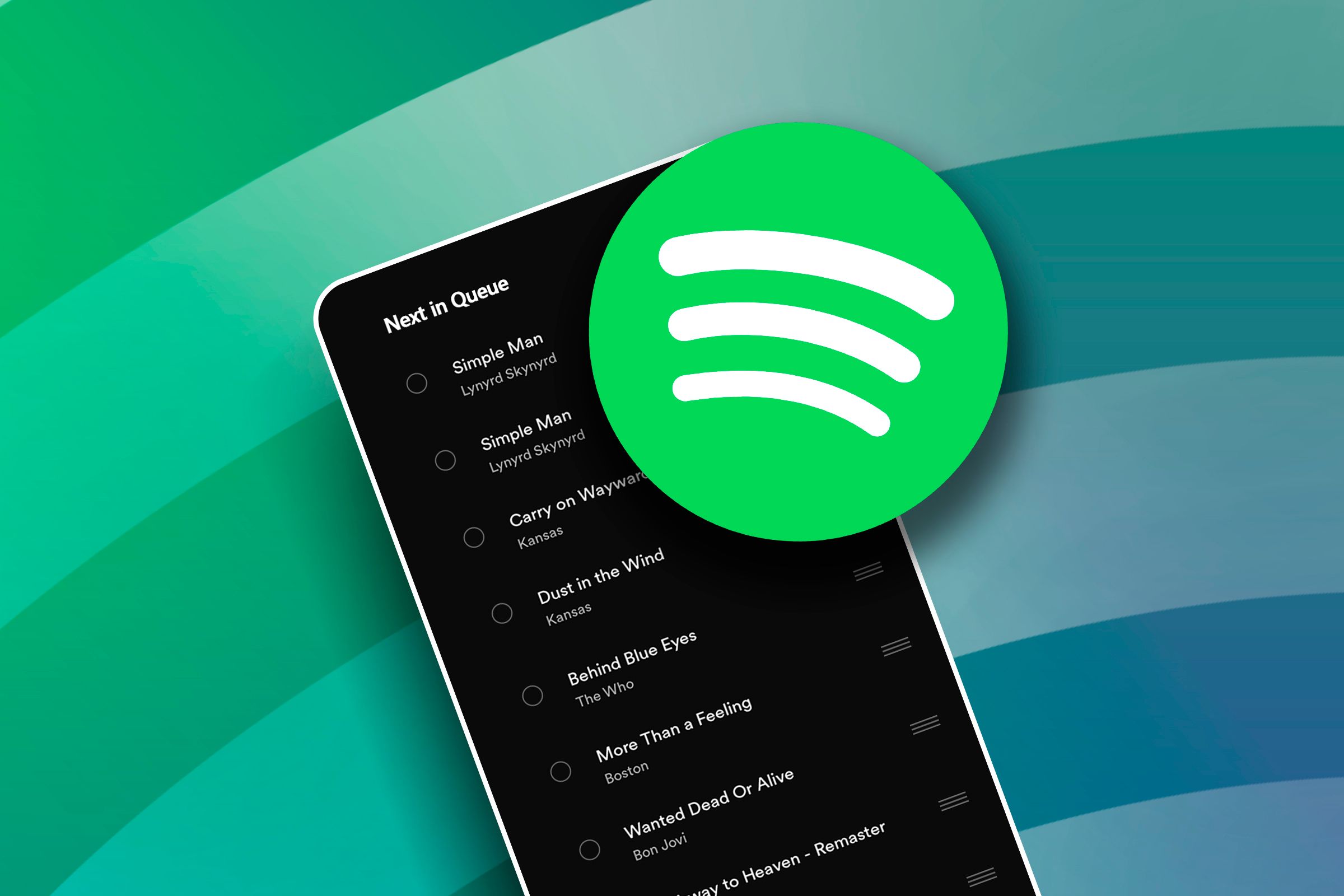A look at play queues for streaming music services, how they differ, and which one may be best for how you listen.
You’ve probably never picked a streaming music service based on how well its listening queue works. Yet loading up songs to play later is a critical part of the listening experience. Each service does it a bit differently, but Spotify’s queue system might be the best. How do they work?
How a Play Queue Works in General
It’s trivial, but to be specific, the “queue” (music or otherwise) is the temporary list of items lined up to play after each other.
When you press play on an album or playlist, the songs behind the first track are added to the queue. It’s assumed that you want to listen to the rest of the album or the whole playlist. If you select a new song, it will play immediately and replace the previous list of songs. Pretty much every music service works like this.
The difference between Apple Music, Spotify, and YouTube Music is how they let you add songs to the queue when you don’t want to get rid of what’s next in line to play.
Spotify has a single “Add to Queue” button. Apple has “Play Next” and “Play Last” buttons. YouTube Music splits the difference and has “Play Next” and “Add to Queue” buttons available.
How Spotify’s Queue Works
window.arrayOfGalleries[“article-gallery-1-992118354″] = ‘” n
- n
n
n
n
n
nn
- n
n
n
n
n
nn
nn
nn
- n
n
n
n
n
n
n
n “‘; window.arrayOfExpandedGalleries[“article-gallery-1-992118354”] = ‘”n
- n
n
n
n
n
nn
- n
n
n
n
n
nn
nn “‘;
Spotify’s “Add to Queue” button has a bit of smarts associated with it. If you start listening to a long playlist and then select a new song to add to the queue, it will put that song next in the queue rather than at the end.
- Song one
- NEW SONG ADDED
- Song two
- Song three
- Song four
Each time you press the “Add to Queue” button on a new song, it will add it next in line, creating an almost secondary queue in the main queue.
- Song one
- NEW SONG ADDED
- NEW SONG TWO ADDED
- NEW SONG THREE ADDED
- Song two
- Song three
- Song four
This works great because it fuels music discovery. For me, there’s usually a rhythm to how I get from one song to another, and keeping that trail intact is important to the discovery process. Spotify’s queue method can also be particularly handy if a bunch of people are contributing songs to a group playlist. This queue system doesn’t reward the last person to add a track by playing it next; it keeps an order.
First or Last With Apple Music
window.arrayOfGalleries[“article-gallery-2-1236557636″] = ‘” n
- n
n
n
n
n
nn
- n
n
n
n
n
nn
nn
nn
- n
n
n
n
n
n
n
n “‘; window.arrayOfExpandedGalleries[“article-gallery-2-1236557636”] = ‘”n
- n
n
n
n
n
nn
- n
n
n
n
n
nn
nn “‘;
When you select “Play Next” for a song on Apple Music, it goes next in line just like Spotify.
- Song one
- NEW SONG ADDED
- Song two
- Song three
- Song four
Every song becomes the next song when you select “Play Next.”
- Song one
- NEW SONG TWO ADDED
- NEW SONG ADDED
- Song two
- Song three
- Song four
However, unlike Spotify, Apple lets you select “Play Last,” which adds the song to the end of the line. Each subsequent song keeps getting added to the end of the list.
- Song one
- Song two
- Song three
- Song four
- NEW SONG ADDED
- NEW SONG TWO ADDED
At any point, you can open the queue and manually move the songs around to better represent the order you want. It’s nice that there are multiple options instead of a single one. But even those two can still be limiting because every song either needs to be up next or in an hour if you have a long playlist.
YouTube Music Mixes Things Up
window.arrayOfGalleries[“article-gallery-3-1143575625″] = ‘” n
- n
n
n
n
n
nn
- n
n
n
n
n
nn
nn
nn
- n
n
n
n
n
n
n
n “‘; window.arrayOfExpandedGalleries[“article-gallery-3-1143575625”] = ‘”n
- n
n
n
n
n
nn
- n
n
n
n
n
nn
nn “‘;
YouTube Music might use the terminology of both Apple and Spotify, but its buttons work the same as Apple’s. “Play Next” does exactly what it sounds like. The “Add to Queue” button simply adds the song to the end of the queue.
Although its queue is a bit vanilla by default, YouTube Music’s “My Supermix” adds some dynamic flavor. Your Supermix playlist queue will update automatically as you like or skip songs. To let you know you aren’t imagining things, you’ll be alerted to real-time changes when they happen. Currently, the Supermix updates happen when using the service on iOS or the website.
Which Streaming Music Queue Is the Best?
Although highly nuanced, Spotify’s queue system tends to cover active and casual music listeners, while Apple’s and YouTube’s approach focuses primarily on casual listeners.
If I play an album or short playlist while I’m cooking in the kitchen, I usually end up just adding songs to the end. I have no problem piling a few more selections at the bottom of the queue, mostly to extend the music duration. Any kind of play later activity will do.
But when I’m actively listening to music, tapping around recommended artists, or discovering new songs, I usually want to listen to those as soon as possible, in the order I found them. In this way, Spotify’s method prioritizes newness but still honors order. The obsessive types and people listening with friends will probably enjoy Spotify’s queue tastes. Everyone else might not even notice, and that’s just fine.


دیدگاهتان را بنویسید